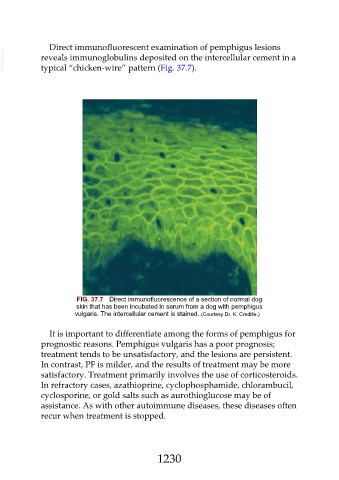Page 1230 - Veterinary Immunology, 10th Edition
P. 1230
Direct immunofluorescent examination of pemphigus lesions
VetBooks.ir reveals immunoglobulins deposited on the intercellular cement in a
typical “chicken-wire” pattern (Fig. 37.7).
FIG. 37.7 Direct immunofluorescence of a section of normal dog
skin that has been incubated in serum from a dog with pemphigus
vulgaris. The intercellular cement is stained. (Courtesy Dr. K. Credille.)
It is important to differentiate among the forms of pemphigus for
prognostic reasons. Pemphigus vulgaris has a poor prognosis;
treatment tends to be unsatisfactory, and the lesions are persistent.
In contrast, PF is milder, and the results of treatment may be more
satisfactory. Treatment primarily involves the use of corticosteroids.
In refractory cases, azathioprine, cyclophosphamide, chlorambucil,
cyclosporine, or gold salts such as aurothioglucose may be of
assistance. As with other autoimmune diseases, these diseases often
recur when treatment is stopped.
1230

